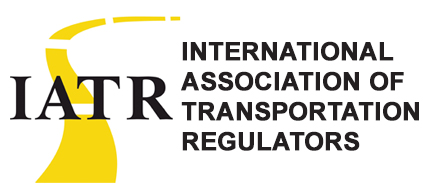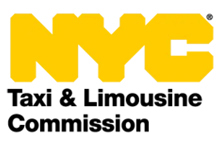COVID-19 cases are again rising in many areas, prompting concerns that we are seeing the next wave of infections as we enter the cooler months. Since the pandemic began, the U.S. Centers for Disease Control and Prevention (CDC), state and local governments and public health authorities, and the Occupational Safety and Health Administration (OSHA) have issued guidelines to minimize the risk of transmission of the virus for individuals and businesses. See links below for relevant publications.
 When it comes to local and state health agencies, their guidance typically mirrors and often cites standards set by the CDC, although some require additional safeguards that supersede the CDC. Among these agencies are the California Public Utilities Commission (CPUC), the Nevada Transportation Authority (NTA), and the Philadelphia Parking Authority (PPA), although this list in not exhaustive. It’s critical that you’re aware of—and follow—the specific expectations set forth by your own agencies to ensure that you prioritize safety.
When it comes to local and state health agencies, their guidance typically mirrors and often cites standards set by the CDC, although some require additional safeguards that supersede the CDC. Among these agencies are the California Public Utilities Commission (CPUC), the Nevada Transportation Authority (NTA), and the Philadelphia Parking Authority (PPA), although this list in not exhaustive. It’s critical that you’re aware of—and follow—the specific expectations set forth by your own agencies to ensure that you prioritize safety.
What Other Regulators Are Doing—Or NOT Doing
Surveys conducted by the International Association of Transportation Regulators (IATR), a global organization representing regulatory agencies, found that most regulators do not favor mandating compliance, but prefer encouraging licensees to adhere to such guidelines.
 In April 2020, the IATR conducted a global survey of its members on the actions regulators were taking in response to the pandemic. Those surveyed reported that they were communicating COVID-19 preparedness and cleanliness information to licensees, and with nearly all reporting that licensees were already following CDC guidelines on social distancing and disinfecting their vehicles and office. Approximately 27 percent of regulators reported increasing enforcement of existing vehicle cleanliness rules.
In April 2020, the IATR conducted a global survey of its members on the actions regulators were taking in response to the pandemic. Those surveyed reported that they were communicating COVID-19 preparedness and cleanliness information to licensees, and with nearly all reporting that licensees were already following CDC guidelines on social distancing and disinfecting their vehicles and office. Approximately 27 percent of regulators reported increasing enforcement of existing vehicle cleanliness rules.
Many regulators have made it easier for licensees to follow CDC guidelines on maintaining distance. For example, the New York City Taxi and Limousine Commission (TLC) eased its vehicle partition requirements to allow TLC-approved partitions at the behest of FHV operators. In addition, a few jurisdictions, including New York City and Nevada, prohibited pooled rides.
 An August 2020 IATR survey once again found that most agencies preferred encouraging adherence rather than mandates. With the exception of California and Nevada, most of the regulators said that workplace safety plans are not required in their jurisdiction. About 75 percent of respondents said they do not favor regulations governing maintaining distance between drivers and passengers or limiting the number of passengers that may be transported at a time but that licensees should be encouraged to follow applicable government or public health authority recommendations regarding the same. More than half of the respondents gave a similar response regarding banning shared rides specifically and said they would recommend certain precautions, such as following public health authority guidelines (87.5 percent), use of face coverings by drivers (81 percent) and passengers (69 percent), seating requirements for in-vehicle distancing (56 percent), and partitions between passengers (25 percent).
An August 2020 IATR survey once again found that most agencies preferred encouraging adherence rather than mandates. With the exception of California and Nevada, most of the regulators said that workplace safety plans are not required in their jurisdiction. About 75 percent of respondents said they do not favor regulations governing maintaining distance between drivers and passengers or limiting the number of passengers that may be transported at a time but that licensees should be encouraged to follow applicable government or public health authority recommendations regarding the same. More than half of the respondents gave a similar response regarding banning shared rides specifically and said they would recommend certain precautions, such as following public health authority guidelines (87.5 percent), use of face coverings by drivers (81 percent) and passengers (69 percent), seating requirements for in-vehicle distancing (56 percent), and partitions between passengers (25 percent).
Vaccines, Resurgences, and Beyond
Local conditions will influence the decisions that public health officials make regarding community-level strategies. Public health authorities continually revise their guidelines as their understanding of the virus evolves in their particular location. To prevent ordering licenses to continue to follow outdated guidelines, regulators may choose, for now, to avoid mandating specific health and safety requirements relating to the pandemic, including: vehicle cleaning and disinfecting, use of PPE, maintaining distance between drivers and passengers, workplace safety plans, health checks and testing, and use of physical barriers. Instead, regulators could either encourage or require licensees to follow applicable official guidance or government directives, and any revisions or updates to those guidelines that can be applied to their regulated industries.
Regulators in the U.S. have not yet penalized licensees for failing to adhere to CDC or state-issued guidelines. Oftentimes, these guidelines and subsequent amendments and updates take effect without notice to or input from the regulators. Furthermore, potential tort liability for not complying with the duty of care set by official guidance might be a significant enough incentive for transportation businesses to comply right now, without the intervention of licensing regulators or other government agencies. Many regulators have taken the approach of working with rather than penalizing the industry, and trying to be supportive of the drivers and transportation businesses through economic relief and waiver of fees and regulatory requirements, but are challenged by how to enforce health and safety mandates through fines, license suspension, and/or revocation if significant non-compliance results. Things could change with the political climate.
GUIDELINES:
CDC:
•Cleaning and Disinfection for Non-emergency Transport Vehicles bit.ly/3o8rB2c
•What Rideshare, Taxi, Limo, and other Passenger Drivers-for-Hire Need to Know about COVID-19 V bit.ly/2HcNfle
OSHA:
•Rideshare, Taxi, and Car Service Workers bit.ly/2Hg6PwS
While regulators continue to grapple with the moving targets of re-openings, resurgence-related shutdowns, and back-to-school transportation plans, there is hope that vaccines are on the way. The introduction of a vaccine alone is not a final automatic solution to many of the problems faced in the sector for the long term. At the request of the CDC and the National Institutes of Health (NIH), the National Academies of Sciences, Engineering, and Medicine formed a committee to recommend a framework for equitable allocation of vaccines when they are available. In the draft framework, the Committee on Equitable Allocation of Vaccine for the Novel Coronavirus recommends a four-phased approach: Passenger transportation workers would be prioritized in Phase 2, which includes workers who are both in industries essential to the functioning of society and at high risk of exposure. The final report is pending.
 Matt Daus
Matt Daus
Whether a vaccine is deployed, how effective it is, and whether transportation drivers, as essential workers, are on the priority list to be some of the first recipients, may well chart the course for the short-term future of the industry’s recovery, as well as the need for regulators to mandate and enforce health and safety requirements. There is now the new question of whether regulators will mandate that drivers must be vaccinated at some point in order to drive—leading to all sorts of tricky legal issues. It will now be up to regulators to exercise sound judgment and walk the line between promoting and ensuring public health and safety, while also lending a helping hand to the riding public and the industry so that it can survive economically. [CD1020]
Matt Daus is a partner with the law firm Windels Marx, President of IATR, and a leading authority on ridesharing apps. he can be reached at mdaus@windelsmarx.com.

